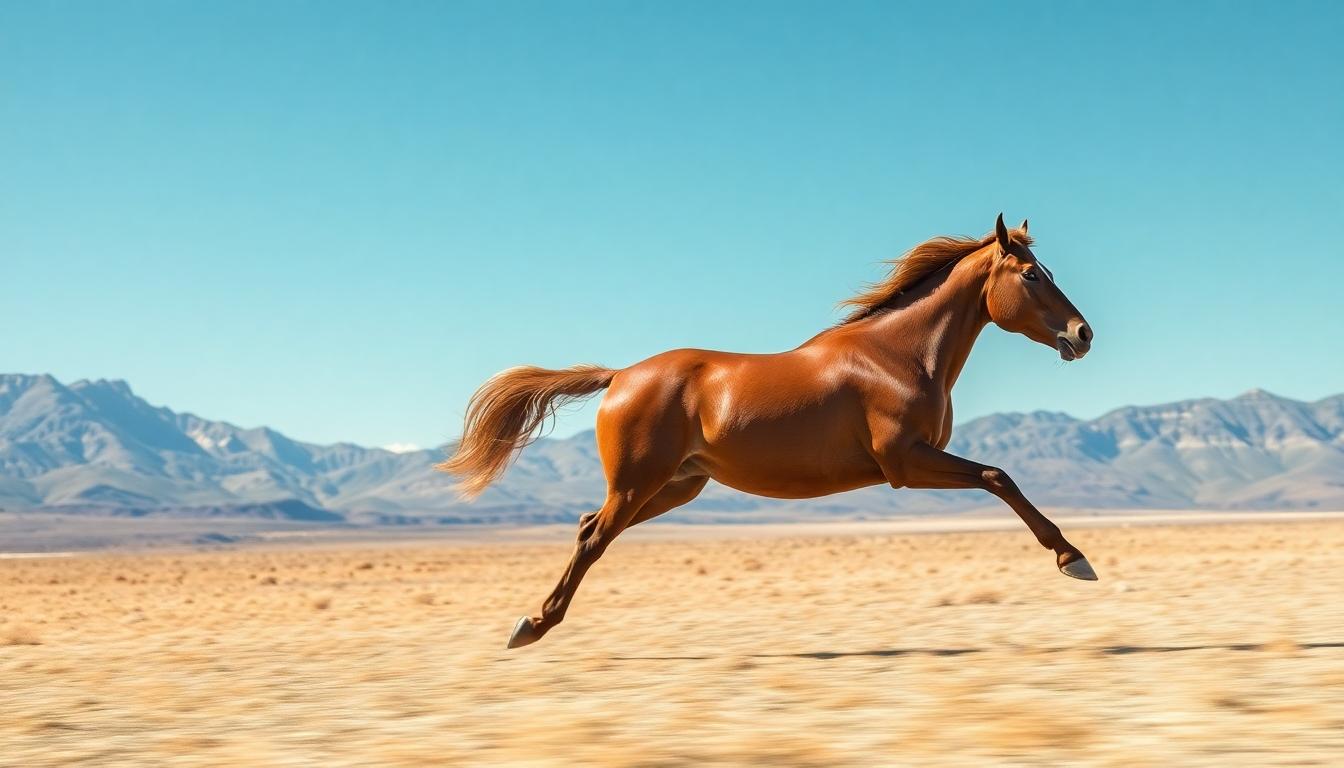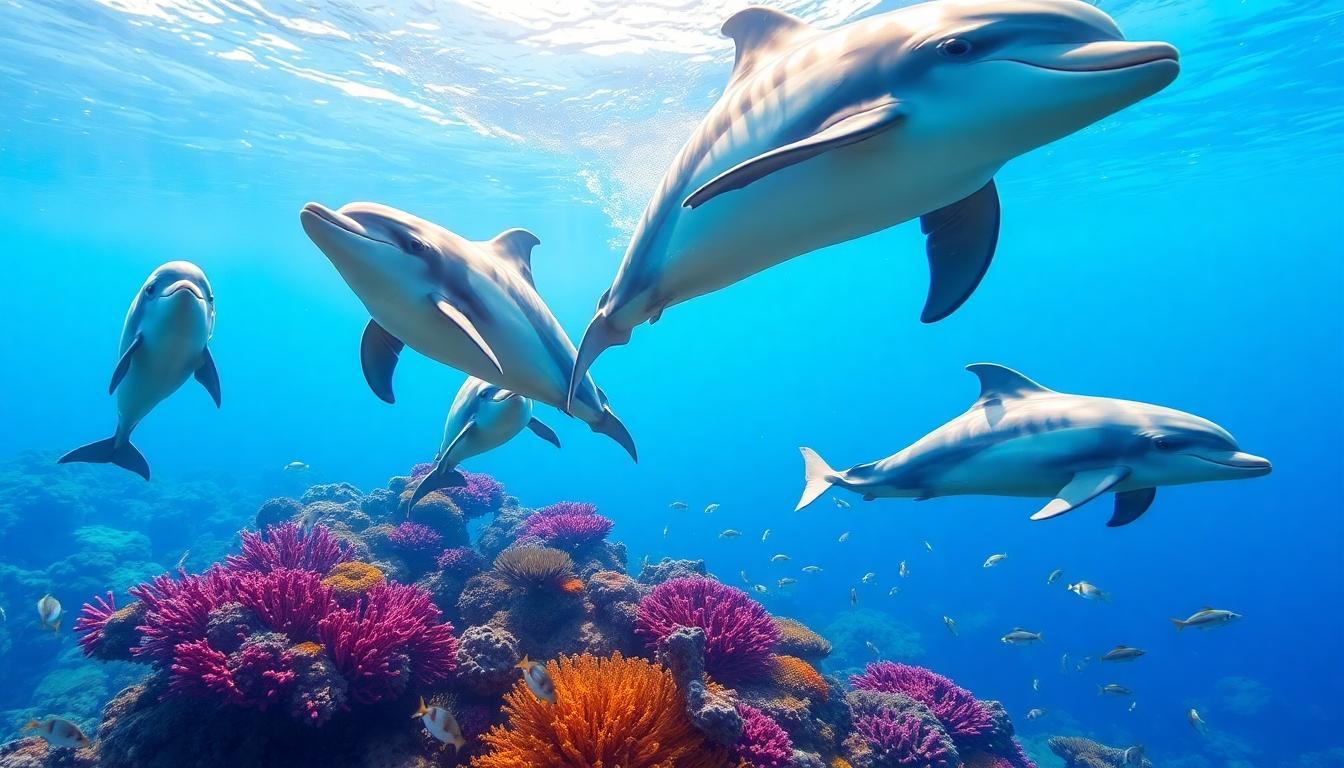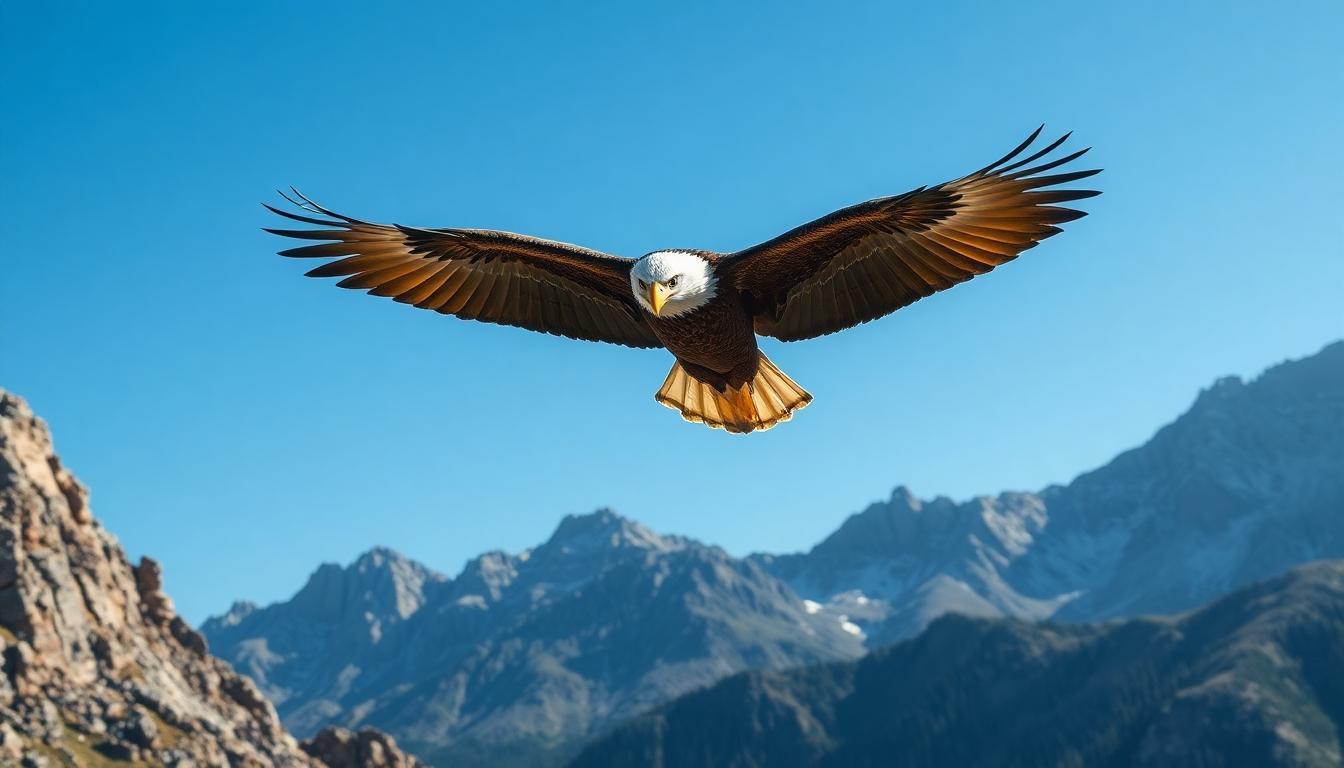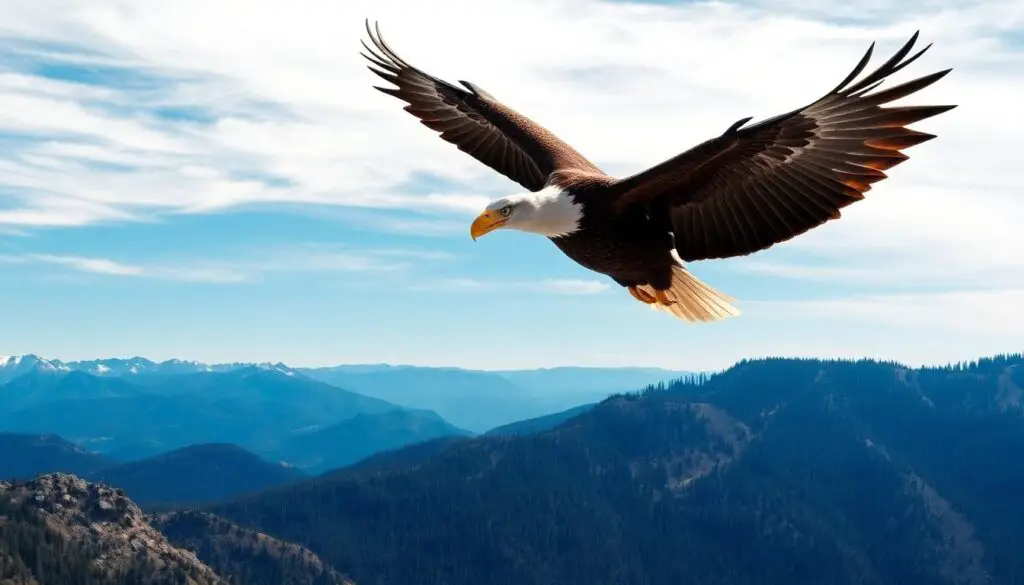Freedom is a universal desire that’s beautifully represented throughout the animal kingdom. From soaring eagles to galloping horses, certain creatures have become powerful symbols of liberty across cultures and throughout history. These majestic animals inspire us with their untamed spirit and remind us of our own yearning for freedom.
In this text, we’ll explore 15 remarkable animals that have come to symbolize freedom in various traditions worldwide. We’ll discover why these creatures evoke such powerful feelings of liberation and independence. Whether you’re an animal lover, a symbolism enthusiast, or someone seeking inspiration, you’ll find fascinating insights into how these magnificent beings represent our most cherished ideal.
Related Posts:
- Unlocking the Mysteries of 50: Exploring its Symbolism Across Cultures and Contexts
- What Do Snails Symbolize? Ancient Meanings & Cultural Significance Revealed
- Animals That Symbolize Hope: 6 Inspiring Creatures to Uplift Your Spirit
- 15 Animals That Symbolize Love Across Cultures | Find Your Perfect Symbol
- Stingray Symbolism: Uncovering the Mystical Meaning Behind These Ocean Guardians
- What Does a Lioness Symbolize? Unveiling the Power of Feminine Strength
- 10 Ancient Animals That Symbolize Wisdom Across World Cultures
- 15 Magnificent Animals That Symbolize Freedom: From Eagles to Wolves
- 15 Powerful Freedom Flowers: Blooms That Symbolize Liberty and Independence
- 10 Majestic Animals That Symbolize Greatness: From Lions to Dragons
- Top 10 Animals That Symbolize Friendship and Inspire Your Relationships
Animals That Symbolize Freedom Across Cultures
The concept of freedom finds expression through various animal symbols in different societies worldwide. Cultural interpretations of liberty often manifest through creatures that exhibit traits associated with independence, strength, and boundless movement. These symbolic animals have influenced art, literature, mythology, and national identities across civilizations.
Eagles: Soaring Symbols of Liberty
Eagles represent freedom in many cultures due to their magnificent flight capabilities and commanding presence. Native American traditions view the eagle as a messenger between humans and the Great Spirit, symbolizing spiritual liberation. American culture adopted the bald eagle as its national emblem, representing freedom and strength since 1782. Throughout Europe and Asia, eagles appear on coats of arms, flags, and emblems to signify power and independence.
Horses: Embodiments of Untamed Spirit
Horses symbolize freedom through their grace, speed, and historical role in expanding human mobility. Arabian cultures celebrate horses as symbols of liberty, with ancient poetry often connecting equine imagery to concepts of unrestricted movement across vast deserts. Mongolian traditions honor horses as central to their nomadic lifestyle and cultural identity, representing the freedom of the steppes. Wild mustangs in North America have become powerful representations of untamed spirit, often featured in art depicting liberty and independence.
Dolphins: Free Spirits of the Ocean
Dolphins embody freedom through their playful nature and graceful movement through water. Greek mythology associates dolphins with freedom and salvation, illustrated by stories of dolphins rescuing sailors and carrying souls to the afterlife. Hawaiian culture views dolphins as ‘Na Kama’i o Kanaloa’ (children of the sea god), representing freedom and joy. Their intelligence, sociability, and seeming enjoyment of life make dolphins universal symbols of living freely across many maritime cultures.
Birds in Flight: Universal Freedom Symbols
Birds universally symbolize freedom across cultures through their ability to transcend earthly boundaries. Chinese traditions feature cranes as symbols of liberty and longevity, often depicted in art soaring above worldly concerns. Persian culture celebrates nightingales (bulbul) as symbols of poetic freedom and spiritual liberation. Celtic mythology portrays ravens as messengers between worlds, representing spiritual freedom and wisdom. The simple silhouette of a bird in flight has become an instantly recognizable symbol of freedom in contemporary global culture.
The Eagle: America’s Ultimate Freedom Symbol

The bald eagle (Haliaeetus leucocephalus) stands as America’s definitive symbol of freedom, embodying power, tenacity, and liberty. Its majestic presence in American culture goes beyond mere representation – it’s deeply woven into the national identity through currency, government seals, and patriotic imagery. Eagles capture our imagination with their ability to soar effortlessly across vast landscapes, perfectly symbolizing the concept of unrestricted liberty.
Bald Eagle’s Significance in American Identity
As America’s national bird, the bald eagle occupies a unique position in American consciousness as the ultimate freedom symbol. Top predators with no natural enemies, these magnificent birds represent unrestrained autonomy and independence in their purest form. Their imposing image appears on the Great Seal of the United States, military insignia, and countless patriotic emblems, reinforcing their connection to American values of resilience and self-determination. Wide wingspans and high-altitude flights further emphasize their representation of transcendence and liberation from earthly constraints, making them powerful visual metaphors for the American spirit of freedom.
Golden Eagles in Indigenous Traditions
Golden eagles (Aquila chrysaetos) hold profound spiritual significance across many Indigenous cultures, particularly among Native American tribes. Revered as divine messengers, these birds create connections between humans and spiritual realms, symbolizing freedom through their sacred association with the sky. Many tribal traditions incorporate golden eagle feathers in ceremonial practices, using them to represent honor, expanded vision, and spiritual autonomy. Their symbolic importance transcends mere physical freedom, embracing a deeper concept of spiritual liberation and divine communication. Indigenous perspectives add rich cultural dimensions to our understanding of eagles as freedom symbols, highlighting their role as spiritual intermediaries with unique connections to ancestral wisdom and unfettered spiritual movement.
Horses: The Spirit of Untamed Freedom

Horses embody the essence of freedom through their powerful strides and majestic presence. Their ability to gallop across open landscapes with unrestrained speed and grace makes them universal symbols of liberty and independence throughout human history.
Wild Mustangs of the American West
Wild Mustangs roaming the American frontier perfectly capture the untamed spirit of freedom. These resilient creatures have adapted to thrive in harsh environmental conditions, demonstrating remarkable survival skills across the rugged terrains of western states. Mustangs live in close-knit family bands, moving freely across vast plains and valleys in search of water and grazing opportunities. Their very existence represents resistance to domestication and a powerful connection to America’s frontier heritage. Conservation efforts today work to protect these living symbols of freedom as their natural habitats face increasing pressure from human development and resource extraction.
Horses in Art and Literature
Horses gallop through countless masterpieces of art and literature as powerful freedom symbols. Classic novels like “Black Beauty” and “The Black Stallion” portray horses as embodiments of liberation and untamed spirit. Artists throughout history have captured the ever-changing movement and power of horses in paintings and sculptures, emphasizing their flowing manes and muscular forms to represent unbridled freedom. Frederic Remington’s western art prominently features horses in dramatic poses, celebrating their integral role in American frontier independence. Literary works often use horses as metaphors for breaking free from societal constraints, with characters finding personal liberation through their connection with these magnificent animals. Their representation in cultural works continues to reinforce the horse’s status as one of the most enduring and compelling symbols of freedom across human civilization.
Dolphins and Whales: Freedom of the Ocean

The vast seas serve as boundless playgrounds for some of Earth’s most majestic creatures. Dolphins and whales embody the essence of freedom through their graceful movements and unencumbered travel across oceanic expanses.
Marine Mammals in Mythology
Whales hold profound significance in various cultural mythologies, often representing cosmic power and wisdom. In Japanese culture, these magnificent creatures are associated with the god of the sea, highlighting their revered status as symbols of marine dominance. Throughout maritime folklore, whales symbolize independence and self-reliance, traveling enormous distances with few natural predators to threaten their journey. Dolphins, though not explicitly mentioned in all mythological accounts as freedom symbols, frequently appear as divine messengers or companions to sea deities across Mediterranean and Pacific traditions. Their playful nature and apparent affinity for humans have earned them special status in seafaring tales from ancient civilizations.
Their Intelligence and Free-Spirited Nature
Whales embody freedom through their remarkable ability to travel vast oceanic distances completely unrestrained. These marine giants demonstrate impressive independence and self-reliance, handling global waters with virtually no natural predators. Dolphins complement this representation of liberty with their extraordinary intelligence and social complexity. Their agile swimming, characterized by impressive jumps and dives, physically manifests the concept of unrestricted movement. Marine biologists have documented dolphins’ sophisticated problem-solving abilities and apparent joy during play—behaviors that strongly reinforce their image as free-spirited beings. Both species demonstrate unique personalities and decision-making capabilities, choosing their migration routes and social companions independently. The open ocean provides these creatures with a three-dimensional environment where they can express their natural behaviors without the constraints that limit terrestrial animals.
The Wolf: Symbol of Wilderness and Independence

Wolves embody freedom through their untamed existence in the wilderness and their complex social structure. As apex predators roaming vast territories without restriction, wolves represent both self-determination and the delicate balance between individual autonomy and community bonds.
Pack Dynamics and Individual Freedom
Wolves demonstrate a fascinating paradox of freedom within their social structure. Their pack dynamics feature a hierarchical system where cooperation ensures survival while maintaining distinct individual roles for each member. Pack hunting showcases this balance perfectly—members work together to bring down prey, yet each wolf maintains decision-making agency during the hunt. This intricate social arrangement allows wolves to thrive through communal reliance while preserving personal autonomy, creating a multifaceted symbol of liberation that few other animals can match. Ecological studies reveal wolves operate across massive territorial ranges spanning 50–1,000+ square miles, underscoring their unrestricted movement and independence from human constraints.
Cultural Significance as Freedom Symbols
Wolves stand apart from other freedom-symbolizing animals through their unique combination of fierce individualism and cooperative survival strategies. Unlike fully domesticated animals, wolves have consistently resisted human control throughout history, reinforcing their identity as wild, free-roaming creatures. They’re frequently portrayed in mythology and cultural narratives as either lone wanderers or powerful pack leaders, emphasizing their dual nature as symbols of independence. When compared to other freedom symbols like eagles with their unrestricted flight or horses with their untamed mobility, wolves uniquely represent wilderness autonomy paired with complex social independence—a combination that resonates deeply across cultures. Their resistance to domestication, unlike their canine relatives, further cements their status as enduring emblems of true freedom in the natural industry.
Birds Beyond Eagles: Doves, Falcons, and Albatrosses

While eagles stand as paramount symbols of freedom, many other avian species embody liberty through their unique characteristics and behaviors. These birds demonstrate freedom through distinctive flight patterns, migratory journeys, and their position in various ecosystems.
Doves: Messengers of Peace and Liberation
Doves represent both peace and liberation in cultural narratives worldwide. Their gentle appearance belies their impressive capabilities as navigators and survivors. Traditional symbolism links doves to freedom through their release in ceremonies marking important transitions or celebrations. Their pure white plumage creates a striking visual metaphor for unburdened movement, particularly against blue skies. Doves demonstrate remarkable homing abilities, finding their way across vast distances without constraints, further cementing their status as freedom symbols in literature and art.
Falcons and Hawks: Masters of the Sky
Falcons and hawks embody freedom through their mastery of aerial domains as apex predators. Their unmatched hunting precision requires complete autonomy in flight, showcasing independence in its purest form. Falcons can reach speeds exceeding 200 mph during hunting dives, moving through air currents with effortless control that few other creatures achieve. These birds maintain vast territories they patrol without restriction, answering to no authority but their own instincts. Their piercing gaze and commanding presence have inspired countless freedom-focused artistic representations across cultures.
Albatrosses: Oceanic Wanderers
Albatrosses symbolize boundless travel through their remarkable transoceanic journeys. These seabirds spend 90% of their lives in flight, crossing entire oceans without touching land for months or years. Their massive wingspans, reaching up to 11 feet, allow them to glide for hundreds of miles without a single wing flap. Albatrosses navigate the planet’s most remote regions, from Antarctica to the North Pacific, embodying geographic freedom in its most extreme form. Their ability to sleep while flying and travel millions of miles throughout their lifetimes makes them ultimate expressions of unrestricted movement.
Migratory Birds and Boundless Travel
Migratory species exemplify freedom through their seasonal long-distance travel across continents. Geese and swallows navigate thousands of miles biannually, escaping environmental constraints that would otherwise limit their survival. These birds cross international borders without documentation, transcending human-created boundaries with instinct-driven determination. Migratory routes established over millennia demonstrate an ancient expression of autonomy that predates human civilization. Their remarkable navigational abilities enable precise returns to exact locations even though traveling across hemispheres, using geomagnetic fields, celestial cues, and environmental landmarks as guides.
Freedom Symbolism in Modern Conservation Efforts

Conservation efforts today leverage the powerful symbolism of freedom-representing animals to drive awareness and action. These symbolic connections help people understand why protecting natural habitats is essential for wildlife autonomy. Animals like eagles, wolves, and whales don’t just represent freedom in abstract terms—they require actual freedom to thrive in their natural environments.
Many conservation programs focus specifically on preserving the unrestrained movement these animals need. Eagles require vast hunting territories free from human disturbance to maintain their role as aerial apex predators. Wolves need connected wilderness corridors to maintain their natural roaming patterns across extensive territories. Marine mammals like dolphins and whales depend on healthy, unpolluted oceans to exercise their freedom of movement.
The concept of freedom extends beyond individual animals to entire ecosystems. Conservation initiatives increasingly emphasize protecting complete ecological networks rather than isolated species. This holistic approach recognizes that true wildlife freedom depends on intact food webs, migration routes, and breeding grounds.
Human encroachment poses the greatest threat to animal freedom in practical terms. Development projects, pollution, and habitat fragmentation all restrict animals’ ability to live according to their natural instincts. Conservation efforts counter these threats by establishing protected areas, wildlife corridors, and marine sanctuaries where animals can exist with minimal human interference.
The symbolic power of freedom-representing animals helps generate public support for these conservation measures. When people connect emotionally with majestic creatures like tigers or butterflies as symbols of liberty, they’re more likely to advocate for their protection. This emotional connection transforms abstract conservation concepts into compelling narratives about preserving freedom in its most natural form.
Conclusion
As we’ve explored these magnificent creatures we’re reminded that freedom isn’t just a human aspiration but a natural state celebrated across species. These animals don’t just symbolize liberty—they embody it through their very existence.
Whether soaring through endless skies protecting vast territories or handling boundless oceans these creatures inspire us to recognize freedom’s value in our own lives. Their stories resonate deeply with our collective desire for autonomy and self-determination.
By protecting these living symbols of freedom we preserve not only remarkable species but the very concept of liberty in its purest form. Their continued existence in the wild serves as a powerful reminder that true freedom requires space courage and the determination to forge one’s own path.
Frequently Asked Questions
Why are animals used as symbols of freedom?
Animals represent freedom through their natural behaviors and traits such as independence, strength, and unrestricted movement. Different cultures throughout history have used animals like eagles, horses, and dolphins to illustrate the concept of liberty. These symbols resonate with humans because they demonstrate qualities we associate with freedom—soaring through skies, galloping across open plains, or swimming freely in vast oceans.
Which animal is most commonly associated with freedom in America?
The bald eagle is America’s definitive symbol of freedom. This majestic bird appears on currency, government seals, and patriotic imagery, embodying power, tenacity, and liberty. Its impressive wingspan and ability to soar across vast landscapes serve as powerful metaphors for the American spirit of freedom and independence. The eagle was officially adopted as the national emblem in 1782.
How do horses symbolize freedom?
Horses symbolize freedom through their powerful strides and majestic presence. Wild mustangs of the American West perfectly represent untamed liberty with their resilience and adaptability in harsh environments. Throughout history, horses have enabled human mobility and expansion, creating a deep cultural association with liberation. They feature prominently in art and literature as embodiments of the untamed spirit.
What makes dolphins and whales symbols of freedom?
Dolphins and whales represent oceanic freedom through their graceful movements and unencumbered travel across vast seas. They embody independence and self-reliance, thriving without the constraints faced by land animals. In many maritime cultures, dolphins are seen as divine messengers, while whales represent cosmic power and wisdom. Their ability to navigate the boundless ocean epitomizes liberty.
How do wolves represent freedom differently from other animals?
Wolves symbolize freedom through their untamed existence and complex social structures. They present a unique paradox of freedom—maintaining individual autonomy while cooperating within pack dynamics for survival. Wolves roam vast territories independent of human constraints, embodying wilderness and self-determination. Their balance of fierce individualism and cooperative strategies distinguishes them from other freedom-symbolizing animals.
What birds besides eagles symbolize freedom?
Several birds symbolize different aspects of freedom: doves represent peace and liberation; falcons and hawks exemplify independence as sky masters and apex predators; albatrosses symbolize boundless travel, spending most of their lives flying across oceans. Migratory birds like geese and swallows demonstrate freedom through seasonal long-distance travel, transcending human-created boundaries with remarkable navigational precision.
Why is conservation important for animals that symbolize freedom?
Conservation ensures these freedom-symbolizing animals can actually experience the liberty they represent. Eagles, wolves, and whales require unrestrained movement and intact habitats to thrive. Human encroachment through habitat fragmentation and pollution threatens their autonomy. Conservation efforts focus on protecting entire ecosystems rather than isolated species, preserving the natural freedom these animals embody.
How do conservation efforts use animal symbolism to promote their cause?
Conservation organizations leverage the powerful symbolism of freedom-representing animals to drive awareness and action. The emotional connection people have with majestic creatures like eagles and wolves helps generate public support for protection measures. By transforming abstract conservation concepts into compelling narratives about preserving freedom in its natural form, these efforts create stronger resonance with audiences and motivate conservation action.







